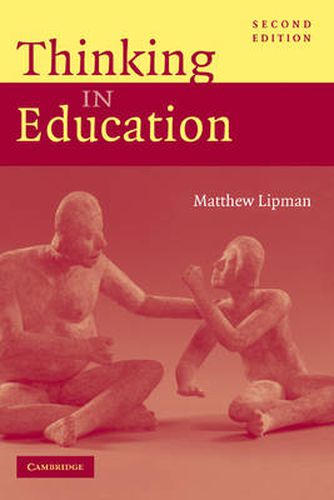Readings Newsletter
Become a Readings Member to make your shopping experience even easier.
Sign in or sign up for free!
You’re not far away from qualifying for FREE standard shipping within Australia
You’ve qualified for FREE standard shipping within Australia
The cart is loading…






The first edition of Thinking in Education made a case for inserting thinking into all levels of education by infusing critical thinking into existing disciplines. Matthew Lipman, a leading education theorist, provided procedures to enable students at all levels of education to become more thoughtful, more reasonable, and more judicious. In the 12 years since the first edition was published, the author has broadened his approach to teaching thinking. While critical thinking is important and highly valuable, it is not sufficient; students must develop creative and caring thinking as well. This new edition provides methods for integrating emotive experience, mental acts, thinking skills and informal fallacies into a concerted approach to the improvement of reasoning and judgment. It also shows how the community of inquiry can be utilized for the reduction of violence in the classroom and for the improvement of the education of children at risk.
$9.00 standard shipping within Australia
FREE standard shipping within Australia for orders over $100.00
Express & International shipping calculated at checkout
Stock availability can be subject to change without notice. We recommend calling the shop or contacting our online team to check availability of low stock items. Please see our Shopping Online page for more details.
The first edition of Thinking in Education made a case for inserting thinking into all levels of education by infusing critical thinking into existing disciplines. Matthew Lipman, a leading education theorist, provided procedures to enable students at all levels of education to become more thoughtful, more reasonable, and more judicious. In the 12 years since the first edition was published, the author has broadened his approach to teaching thinking. While critical thinking is important and highly valuable, it is not sufficient; students must develop creative and caring thinking as well. This new edition provides methods for integrating emotive experience, mental acts, thinking skills and informal fallacies into a concerted approach to the improvement of reasoning and judgment. It also shows how the community of inquiry can be utilized for the reduction of violence in the classroom and for the improvement of the education of children at risk.